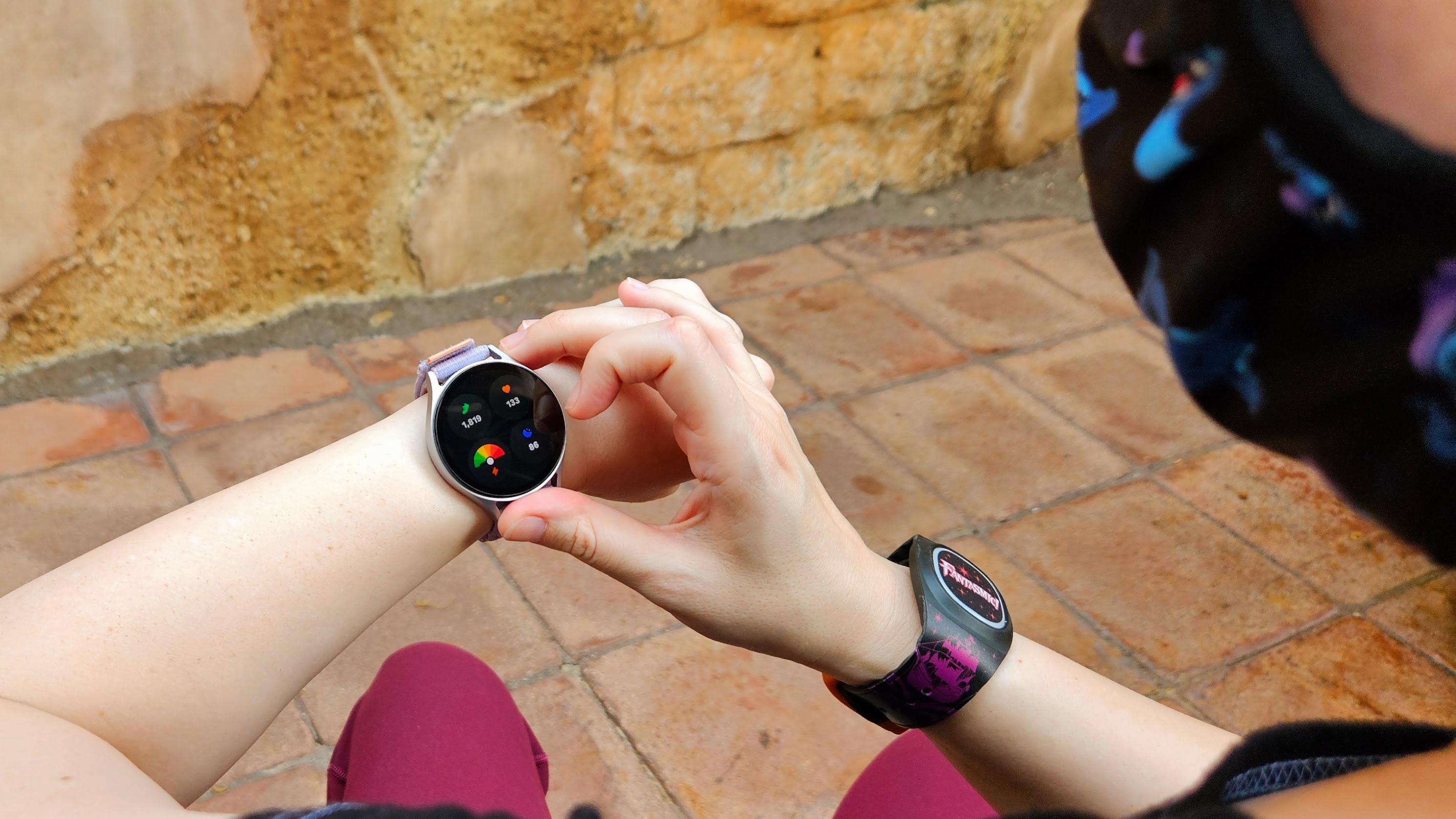Karma Go mobile hotspot review
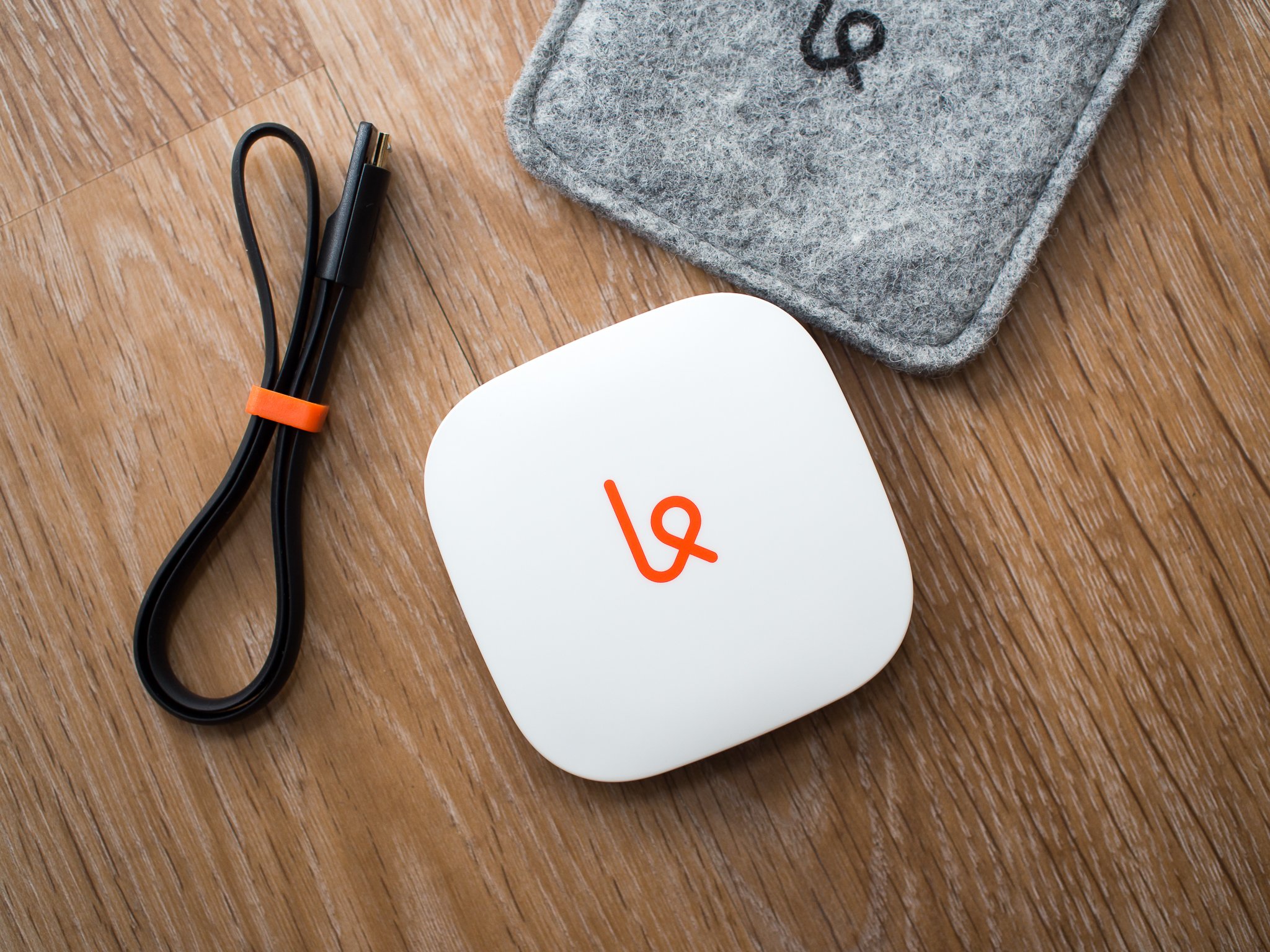
As anyone who has had a smartphone for any length of time knows, dealing with a mobile carrier and buying data is a pain. No matter what the situation is you always feel like you're getting the short end of the deal (spoiler: you are) — and even when you find a plan that you think is right for you, that might not be the case a month or two down the road. The choices are even slimmer when it comes to hotspots, where the prices per gigabyte of data are cost-prohibitive, and you have few options for plans.
Early last year, the Karma hotspot came on the scene to try and break away from the standard model of monthly plans and yearly contracts for hotspots, going purely on a pay-as-you-go system. We loved the flexibility and business model of the Karma for those who only need a hotspot from time to time, but it was hamstrung by Sprint's aging WiMax network.
But after a little stumble, the new Karma Go is here with better hardware, the same great usage model and yes, a proper LTE network behind it. Here's our full review of Karma's second shot at a hotspot — read on.
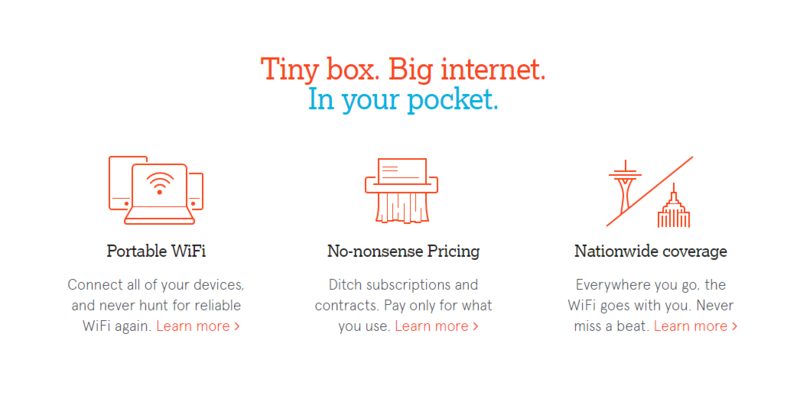
My hotspot is your hotspot
How the Karma Go works
Though a good number of people have probably heard of the Karma hotspot, not many have likely used one before. For that reason I need to kick off this review by explaining just how Karma works.
Rather than going to get a hotspot from your current phone carrier and tossing it on its own data plan or even a shared data plan, or maybe going to a traditional monthly prepaid carrier for a hotspot, you buy the hardware directly from Karma for $149 ($99 if you bought the original Karma). There's just one hotspot option, and there isn't a monthly plan associated with the hotspot — you simply buy data in 1, 5 or 10GB increments, and when it runs out, you can choose to buy more. The data never expires, and it's tied to your account, not the hotspot — so you can connect to another Karma Go in the wild and use the data you paid for.
That points out a big divergence of how the Karma Go works compared to other hotspots out there. Rather than having a customizable name and password for logging into your hotspot, every Karma Go is actually open to anyone who wants to connect. When you connect to your Karma Go (or any other you come across in the wild), you'll get a simple splash page in your browser where you log into your Karma account to start accessing the data you paid for. Once you've signed into your own Karma Go on your devices, they'll automatically connect going forward as well.
Be an expert in 5 minutes
Get the latest news from Android Central, your trusted companion in the world of Android
A different way to look at owning a mobile hotspot.
When other people connect to your Karma Go, they can log in to or create a new Karma account, and when they do so you both get a free 100MB of data to use. Again, the data is tied to your account, not the hotspot, and everyone's traffic is kept completely separate — once they run out of their data, they don't start eating into yours. The Karma Go also supports up to eight simultaneous users, so there's no real downside to letting someone else on.
It's definitely not a "traditional" system, but it isn't super hard to understand, either. Now let's move on to what it's like actually using a Karma Go.
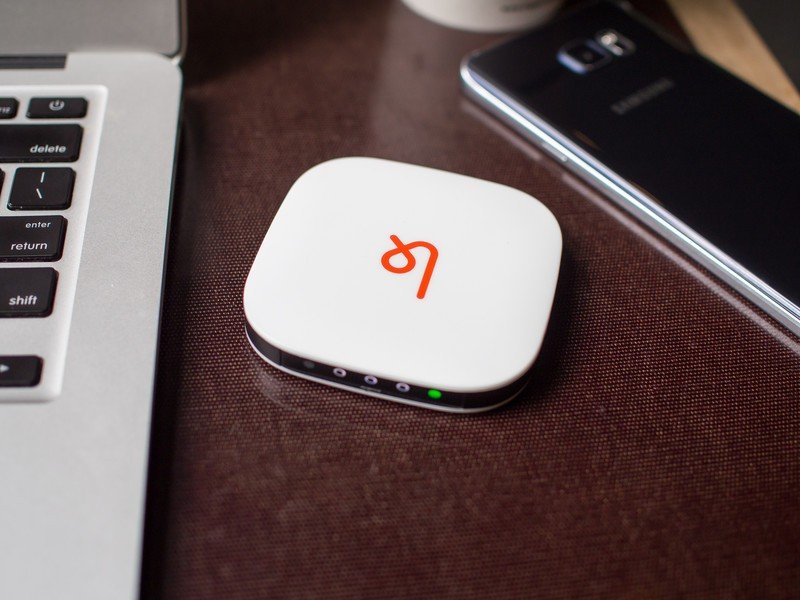
A hotspot, without all the baggage
Using the Karma Go
The Karma Go looks and works very similarly to the original Karma, and that means simplicity is the name of the game. The hotspot is actually rather small, because it only has one button, one port and five LEDs on the front for status notification. There's no display or complex interaction with the hotspot — you just press and hold the button on the side to turn it on or off, and when it's on you'll get an idea of its battery life from one multi-colored LED and the signal strength from three more.
You get a very nice little protective pouch to keep your Karma Go safe when it's bouncing around in your bag or coat pocket, as well as a very neat little Micro USB charging cable that has a latch to keep it from getting tangled and has magnetized ends that stick together when not in use.
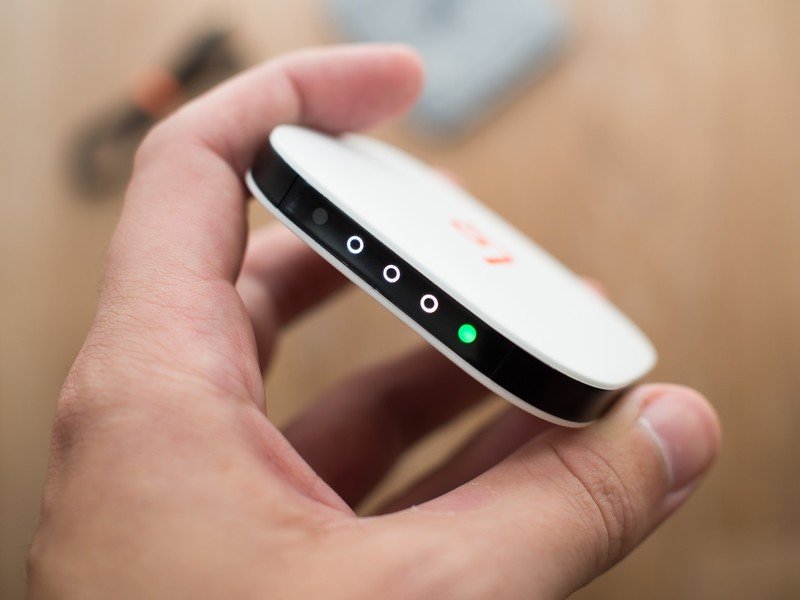
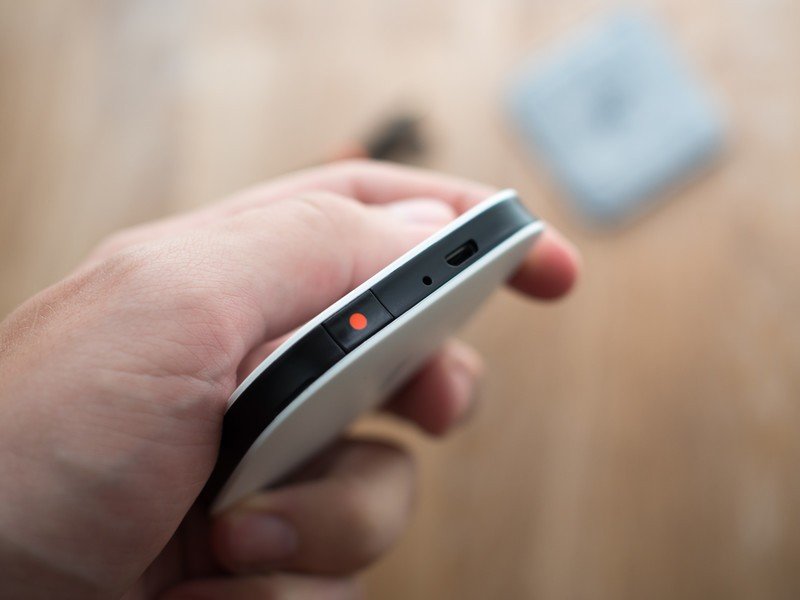
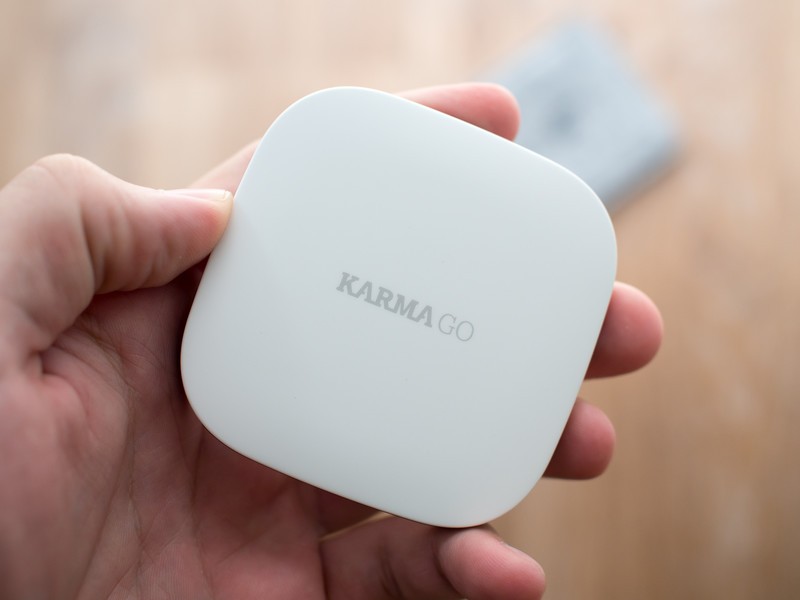
The Karma Go is surprisingly small, and dead simple to use.
The Karma Go powers up and finds a mobile network quickly, and though it's small it offers a quoted five hours of constant internet use (far more with sporadic or low-bandwidth use) and 220 hours of standby time out of its 1550 mAh battery. Because of that long standby time the Karma Go actually only drops to a standby mode by default when you press and hold the power button from an on state, and you can tell it's still idling by the slowly-pulsing white LED on the front. If you won't be using it for a long time, you can do a very long press on the power button to turn it off completely, though I never really found the need to do so.
The Karma Go runs on the Sprint LTE network (with a 3G backup), and while it's dramatically better than the WiMax network of the previous Karma it isn't going to be the best choice for everyone. Only you know if the Sprint network is good where you live, work and travel, and while Sprint doesn't have the biggest LTE network footprint it is expanding regularly. Around the greater Seattle area Sprint is pretty good nowadays, and I would get download speeds around 10-15mbps with uploads landing in the 5mbps range. That's about what I expect from a Sprint phone in this area, so it seemed to be right on par. Going further out into more rural areas the Karma Go held a signal on 3G, which was better than my T-Mobile phone could offer me (which was only GPRS) but obviously wasn't too speedy.
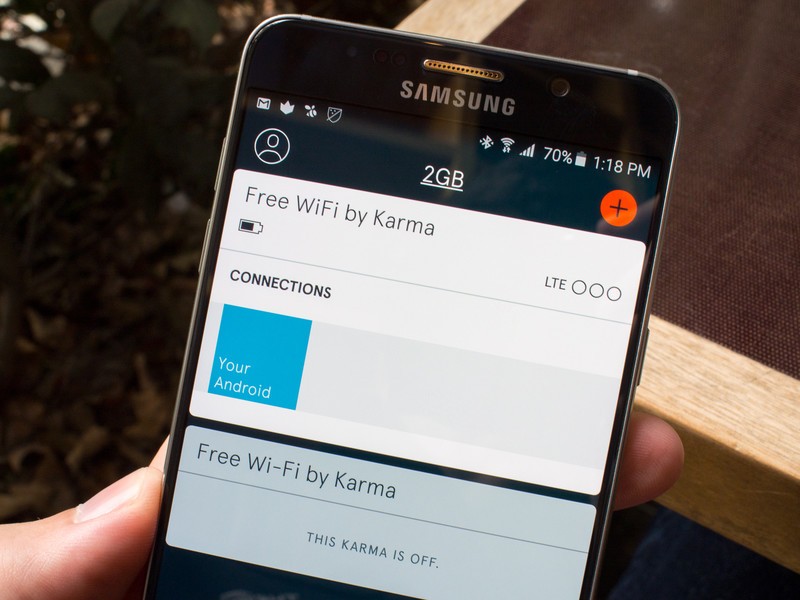
You need to relinquish some control, but it all works as advertised.
Though it has nothing more than a few LEDs on the front for status notification, you can perform all of the necessary functions of the Karma Go from the companion app for Android or iOS. The app shows your current battery and network strength, who's connected to it, and your data usage by month, day or even hour. You can get notifications on your phone when you're getting low on data or battery, and when someone joins your Karma Go. You can also instantly pay for more data if you need to on the go. I wish it had an option to view exact signal strength and battery percentage, but considering the ease-of-use angle Karma Go is aimed at, I can't be too upset those more advanced features are missing.
As I noted above, you buy non-expiring one-time-use data in increments of 1, 5 or 10GB for use with the Karma Go. Data is a tad more expensive per gigabyte than you'll pay on a monthly recurring plan, but the fact that it never expires is baked into that price. 1GB is $14, but if you bundle up 5GB for $59 ($11.80/GB) or 10GB for $99 ($9.90/GB) you get a better deal. Karma also often runs sales when you can stock up on data, and of course if you happen to share your hotspot often those 100MB bonuses add up, too.
The standard interaction with Karma Go is really great, and it just works every single time you turn it on. No configuration, no fidgeting — power it up, connect your phone, tablet or laptop and go. It feels more like an appliance rather than a gadget that you feel like you need to manage and control, and for most people that's a plus. For the avid mobile device enthusiast it may be tough to give up some control, but I think even that type of user (I'd put myself in that camp) can learn to relinquish some control and just use the Karma Go as it was intended.
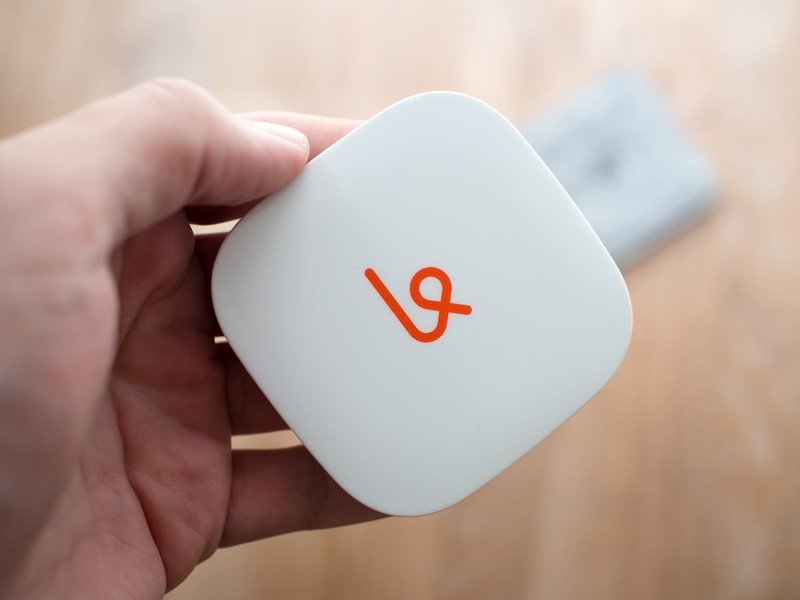
Awesome idea, but not perfect
Karma Go hotspot Bottom line
The Karma Go is a super interesting take on the traditional model of buying a mobile hotspot. It helps you break away from the shackles of having yet another device tied to your phone carrier, and gives you another choice for mobile data redundancy, travel and skipping over potentially unsafe public Wifi. The hotspot is easy to setup, use and manage, and the data pricing is fair for what you get considering you don't have a recurring monthly charge.
Though the model is interesting and works as advertised, that doesn't mean it's without potential flaws. Not being able to control who connects to the hotspot isn't a real issue for most, but is bothersome if you want to completely manage what's happening with your hotspot for data speed and battery reasons. It also means you can't easily share your Karma Go with friends by just giving them a password, leaving you to instead ask them to sign up for a Karma account to get a free 100MB of data to use.
Karma Go is a solid choice if you need a backup connection with a carrier other than what your phone uses, which can be a must for those who need Internet at all times. This is also a great hotspot for those who spend lots of time out of the country, or are even from another country but visit the U.S., and don't want to pay every month for service. It's also worth considering if you're just tired of paying a flat monthly rate for data and don't want to keep hunting for public Wifi hotspots.
With a few tweaks, Karma Go could be a great hotspot option for even more people, but as it stands it still serves its purpose well and should be considered by plenty of folks who are looking to pick up a mobile hotspot. And at $149 with competitive data rates, the barriers to giving it a try are relatively low. Just make sure you understand how it all works before you sign up, and you won't be disappointed.
Andrew was an Executive Editor, U.S. at Android Central between 2012 and 2020.

